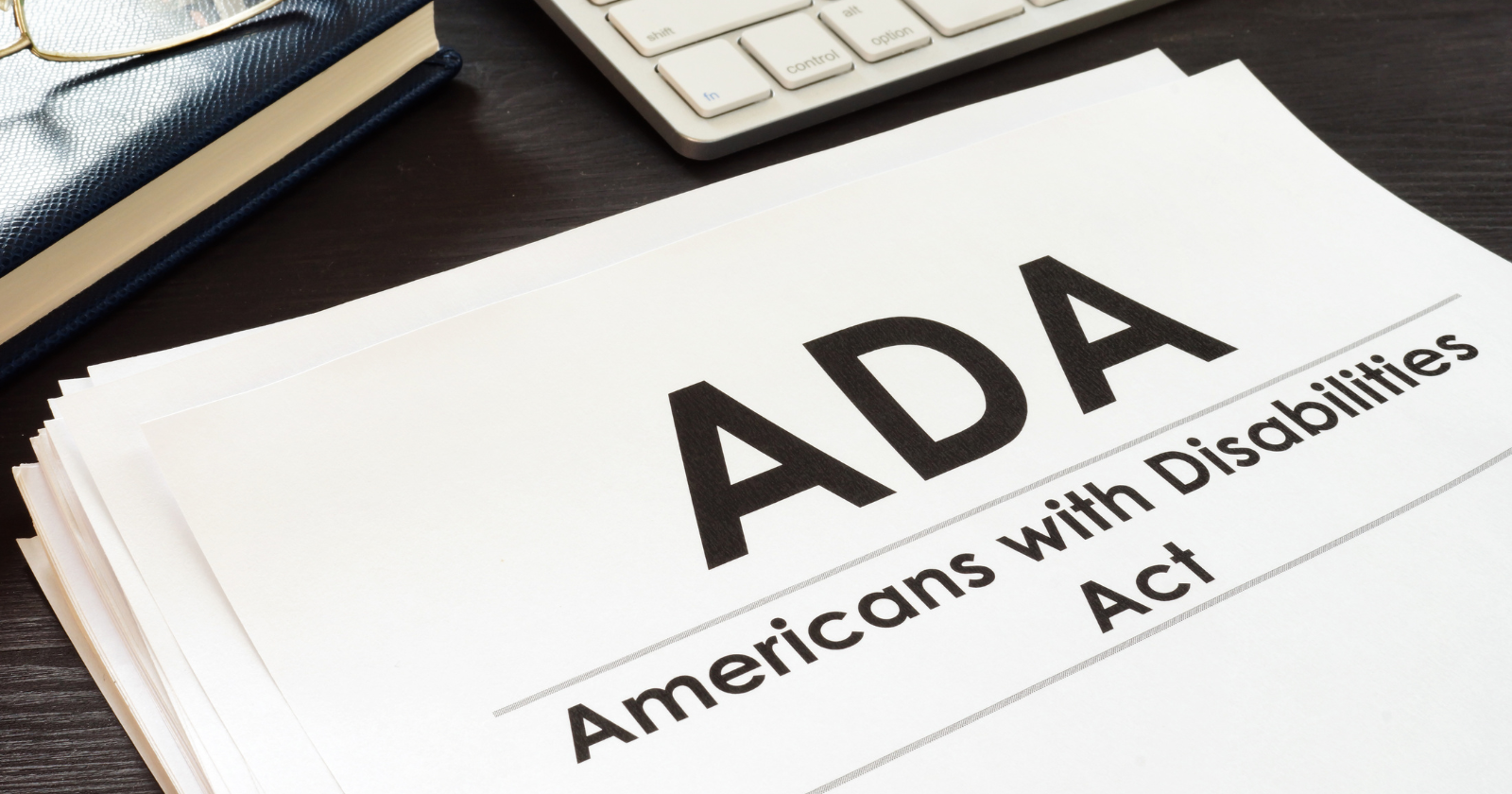Have you ever wondered, ‘What Does ADA Stand For?’ The Americans with Disabilities Act (ADA), passed in 1990, is a life-changing law that has transformed the landscape of civil rights, ensuring that discrimination against people with disabilities is prohibited in all areas of public life. This article delves into the various aspects of the ADA, from employment and transportation to public accommodation and communication, providing a comprehensive understanding of this pivotal act.

1.Title I (Employment)
Equal Employment Opportunity for Individuals with Disability
What Does ADA Stand For? It stands for Equal Employment Opportunity for Individuals with Disabilities is an Equal Employment Opportunity law that prohibits discrimination against qualified individuals with disabilities in all aspects of employment. Equal Employment Opportunity for Individuals with Disabilities applies to all employers regardless of size, and it covers all types of employment, including full-time, part-time, and contract work.
You Might Be Interested In This: How To Get Power Of Attorney For Elderly Parents
What Does ADA Stand For? It stands for Equal Employment Opportunity for Individuals with Disabilities also applies to job seekers with disabilities who are applying for jobs, as well as employees with disabilities who are currently employed. The law provides for Equal Employment Opportunity for Individuals with Disabilities by requiring employers to make reasonable accommodations for qualified employees and job applicants with disabilities, unless the accommodations would impose an undue hardship on the employer.
You Might Be Interested In This: The Best in ADA Kitchen Design
What Does ADA Stand For? Equal Employment Opportunity for Individuals with Disabilities also prohibits employers from discriminating against employees or job applicants with disabilities in all aspects of employment, including hiring, firing, promotion, salary, benefits, job assignments, and training. Equal Employment Opportunity for Individuals with Disabilities is enforced by the Equal Employment Opportunity Commission.
2.Title II (State and Local Government)
Nondiscrimination on the Basis of Disability in State and Local Government Services
What Does ADA Stand For? The ADA stands for Equal Employment Opportunity for Individuals with Disabilities (EEOID) laws protect disabled workers from discrimination in all aspects of employment, including hiring, pay, promotion, and termination. In addition, these laws require employers to make reasonable accommodations for workers with disabilities, such as providing accessible facilities and equipment.
EEOID laws also prohibit state and local government agencies from discriminating against individuals with disabilities in the provision of services. This means that state and local governments must ensure that their programs and services are accessible to individuals with disabilities and provide reasonable accommodations as needed. These laws help to ensure that all Americans have an equal opportunity to participate in the workforce and receive state and local government services.
You Might Be Interested In This: PUT YOUR TITLE HERE AND LINK IT
3. What Does ADA Stand For-Title III (Public Accommodations)
Nondiscrimination on the Basis of Disability by Public Accommodations and in Commercial Facilities
The Americans with Disabilities Act (ADA) prohibits discrimination against people with disabilities in several areas, including employment, transportation, public accommodations, communications and access to state and local government’ Equal Employment Opportunity for Individuals with Disabilities is a section of the ADA that prohibits discrimination in employment against qualified individuals with disabilities.
The Equal Employment Opportunity Commission (EEOC) is responsible for enforcing this law. The ADA also includes a section on nondiscrimination on the basis of disability by public accommodations and in commercial facilities. This section generally applies to businesses open to the public, such as hotels, restaurants, retail stores, movie theaters, sports arenas and stadiums.
What Does ADA Stand For? It means Businesses must provide reasonable accommodations to people with disabilities and may not discriminate against them in the provision of goods and services. Finally, the ADA includes a section on miscellaneous provisions. This section includes a number of technical requirements relating to specific aspects of the law, such as effective communication, building and equipment standards, and other requirements.

4.What Does ADA Stand For-Title IV (Telecommunications)
The Americans with Disabilities Act (ADA) was enacted in 1990 and is a set of laws that prohibit discrimination against individuals with disabilities in all areas of public life. Title IV of the ADA covers telecommunications, which includes things like phone services, cell phones, and the internet. The goal of Title IV is to ensure that people with disabilities have the same opportunities as everyone else to participate in the modern world.
This includes being able to make and receive phone calls, access the internet, and use other digital technologies. To accomplish this, service providers are required to make reasonable modifications to their services and equipment so that people with disabilities can use them. For example, phone companies must provide TTYs (text telephones) for people who are deaf or hard of hearing, and web developers must design websites that can be used by people who are blind or have low vision. These modifications help to level the playing field so that everyone can take part in our increasingly digital world.
5.What Does ADA Stand For-Title V (Miscellaneous Provisions)
The ADA is the Americans with Disabilities Act, a wide-ranging civil rights law that prohibits discrimination based on disability. The ADA covers a wide range of disabilities, including physical, mental, and emotional impairments. Title V of the ADA deals with miscellaneous provisions, such as penalties for violators and measures to ensure compliance with the law. Title V also contains a number of technical requirements, such as standards for accessible designs and communications. The ADA is an important law that helps to protect the rights of people with disabilities. By ensuring that businesses and public facilities are accessible to all, the ADA helps to create a more inclusive society.
What does ADA status mean?
The ADA is a federal law that protects people with disabilities. If you have an impairment or history of such, and even if it doesn’t affect your daily life – as long as employers believe in this too- then they must provide reasonable accommodations for us!
More ADA Articles Here
- Best ADA Compliant Faucet
- Best ADA Compliant Handheld Shower Head
- Different Types of Disabled Toilets
- Best Ideas for an ADA Compliant Bedroom
Conclusion
What Does ADA Stand For?’ is more than just an acronym; it represents a commitment to equality and inclusivity in all aspects of public life. The ADA is a testament to the progress we’ve made in recognizing and protecting the rights of individuals with disabilities. If you have any thoughts or questions about the ADA, feel free to leave a comment below. Together, we can continue to learn and advocate for a more inclusive society.
